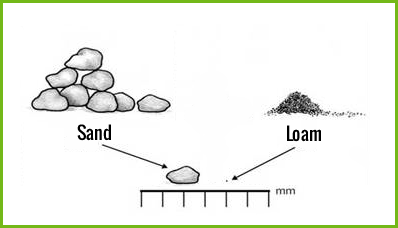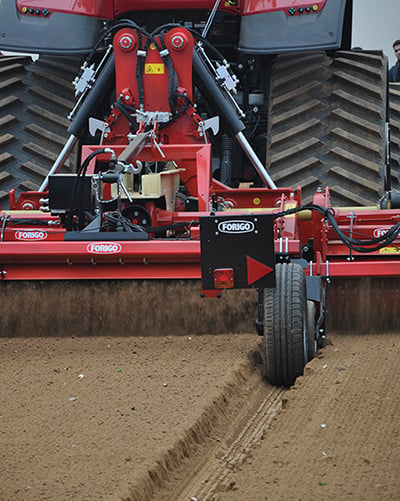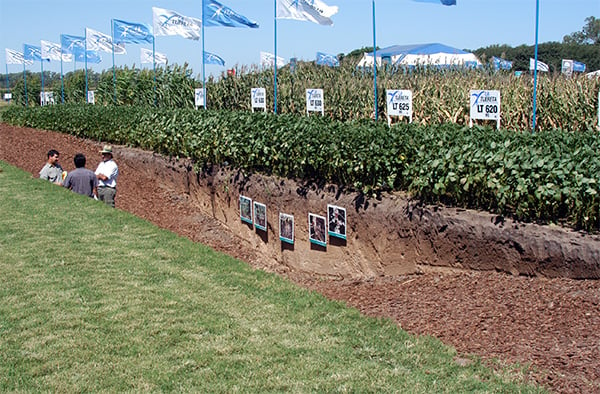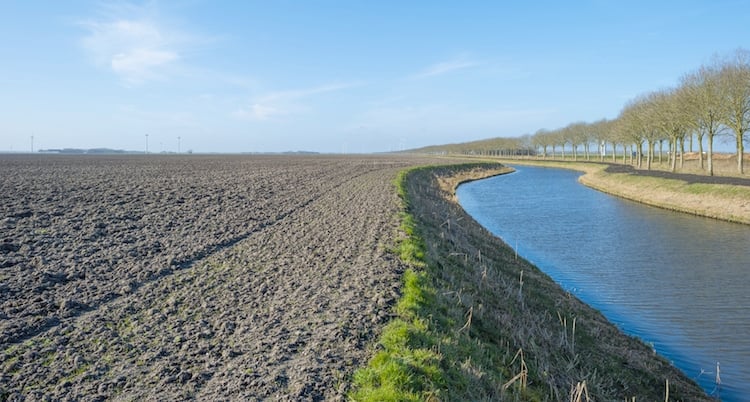News
Water Stagnation: what is it and how to avoid it
News _ 30 NOVEMBER _2018
How many times did you find yourself in trouble because of plentiful rainfalls? You can’t avoid completely this risk, but it’s possible to reduce it. Let’s analyze the phenomenon of water stagnation together.
The phenomenon of water stagnation happens when the water can’t reach the surface of the soil because its empty spaces are already occupied. Water stagnation can be on the surface of the soil and in the macropores under the surface (for example in the first 40-50 cm). In this case the stagnation cannot be seen but it’s dangerous because it reduces the useful layer for the development of the crop.
In a fertile soil, water stagnation should be a temporary phenomenon, its normal short duration doesn’t affect the fertility of the soil and it doesn’t cause damages for the crops. Vice versa, when the water stagnation has a long-term duration, it can cause serious alterations. The long-term water stagnation represents a land which has not enough porosity compared to the agricultural needs.
In order to understand how to face this problem, it is important to get acquainted with the relationship between water and soil, thanks to the acquisition of some agricultural concepts.
Water stagnation: texture and porosity of the soil
Agricultural soil is made of full spaces (the solid portion of the territory) and empty spaces (pores). The perfect equilibrium between these two components is represented by the 50%. Often it’s difficult to maintain this standard.
Pores are made of micropores and macropores. Micropores are gaps between loam particles (they have a dimension of 0,002 mm). Macropores are gaps between granules or between structures of unbundling of clumps (produced by the work) or between particles of sand which have bigger diameter (0,2 mm).
The tiniest part of the particles creates the soil and has electricity on his surface, it’s rolled up with a layer of water characterized by chemical forces (dipolar bonds) which hold this electricity making it unavailable for plants. It is called hygroscopic water. The space between colloids can be occupied by water moving under the effect of the capillarity. In ideal conditions, water is always available for micropores and they can satisfy the needs of plants. The plot of land in which the water moves and is characterized by the capillary action is called “capillary fringe”. A very important component regarding the fertility is tied to this fact, in seasons where there is a lower rate of rainfalls, water refill rely on this capillary action. In order to satisfy the crop, it’s necessary the connection between the groundwater and the capillary fringe, the last one has to reach the roots of the crop.
In macropores, the passage of the water is affect by the gravity: the water runs down deep into the soil until it reaches a permeable or a non-permeable layer. On the non-permeable layer there is the groundwater which can be fed from areas far away (even km far away) or from weather conditions (rain and snow). This second condition is typical in the Po valley where alluvial deposits created loam layers which “separate” the deep stratum from the superficial ones.
In natural lands, macropores have biological origin and they are small ducts which keeps the development of roots and the passage of earthworms and other bugs, fundamental organisms for soil fertility. These elements called biopores allow the development of the sod-seeding technique. This process doesn’t allow the work of machines on the soil; the permeability is granted by the creation of biopores thanks to vegetation, crop, the natural fauna of a fertile soil and the organic matter.
Water stagnation: which type of soil?
Sandy soils are always permeable because they are full of macropores. This lack makes sandy soils sensible to drought. As a matter of fact, micropores not only allows the capillary resurgence but also have the function of stocking the water. 
Loam soils (with 40% loam) are full of micropores and the presence of macropores depends on the stability of particles. For this reason, lands full of water stagnation are characterized of weaving full of clay and loam, with a less percentage of sand. In this lands, it’s important to keep a balance between micropores and macropores because the permeability of the soil depends on macropores.
In deep soils of the Po valley and other Italian valleys it’s difficult that the soil cannot reach the water after heavy rainfall. The cause of water stagnation dangerous for the stability of the crop, depends on the insufficient permeability of the worked area. Obviously, the water stagnation phenomenon takes place only when there are long periods of heavy rainfalls. In Winter, when temperatures doesn’t allow the vegetative activity, water stagnation can last several days but it doesn’t represent a problem. When the vegetation is active, the absence of air in the soil can cause troubles for the crop, in serious situation plants can suffer from yellowing leaves.
If we sum up, we can state:
- Our lands can contain lots of water because they are deep soils;
- Water stagnation is caused by an insufficient permeability of the layer reached by roots;
- The absorption of water is possible thanks to macropores, which in loam soils depend on the stability of the particles;
- In natural lands, characterized by the sod-seeding technique, an important compoment of macropores are represented by biopores (biological pores);
- Water stagnation is less dangerous during Winter season, while it has an high rate of danger in Spring, when the vegetation is active.
It’s fundamental to manage tough lands in order to preserve the aggregations and create the ideal condition in which new aggregation can shape. Lots of farms have to change the line of working with soil: from the preparation to the seeding bed to post harvest process.
Water stagnation: organization of agriculture
In order to solve the problem of water stagnation in northern valleys of Italy, it was necessary to create complex agricultural arrangements characterized by channels, trenches and a slope given to the plots. The slope is useful to grant a superficial draining in order to avoid that meteoric waters become stagnant on the surface. The draining shall adapt plantation to the needs of crops. Agricultural arrangements have the purpose to distance the excess of water and rarely are arranged to facilitate the storage of water in the soil.
Agricultural arrangements are useful in areas which rainfalls gather in specific periods of the year. But when rainfalls are too excessive, the fast draining of waters can be a losing strategy. In recent years, the increase of drought and the changes in the distribution of rainfalls have brought to a progressive decrease of the capillary fringe and, in some areas, a decrease of hydro-supplies too. The solution to these problems, based on a project developed in California, is the creation of areas with aquifers refill: in Winter season, these fields are isolated from water supply in order to give space to the water and pass through the soil to refill the groundwater.
Water stagnation: preventive operation
Now you can understand which are the useful operations to prevent the problems related to water stagnation.
The first operation aims to remove the working surface, which is the first cause of water stagnation. You can remove the working surface by operating in a depth of 10-15 cm higher than tillage.
The second operation aims to remove the tillage to avoid the re-establishment of the working surface. Besides, the application of the plough causes a decrease of organic matters, which is the center of the third operation.
The increase of organic matter (humus in particular) in soil improves the creation of macropores. The techniques useful to increase organic matters are:
- The abandonment of tillage (which don’t have to be upside down and deep);
- The supply of organic fertilizers (manure, compost…);
- The introduction of cover crops and green manure crop.

We also have to consider the preventive operation regarding the effectiveness of the agricultural system in agricultural funds. The most important action is the leveling of lands in order to get rid of repressions in plots. These areas are subject to water stagnation.
Conclusion
In this article, we’ve analyzed the water stagnation: the possible causes and the fields which are characterized by this phenomenon. As we said before, it’s not possible to fully delete the problem but, with the right insights, you can reduce the risk of having this problem in your land.
We hope this article has been useful for you. If you have any doubt or specific question, please contact us! Our experts Forigo are always at your disposal.

Research and Development Division of Forigo Roteritalia. Team of experts engaged in the study and analysis of the main agricultural and horticultural techniques used today. Knowledge combined with competence are the starting point for continuous improvement in a scenario of innovation and technological development.
Previous Exhibitions
30 MARCH 2025
Forigo at Agriumbria 2025: quality in soil preparation













